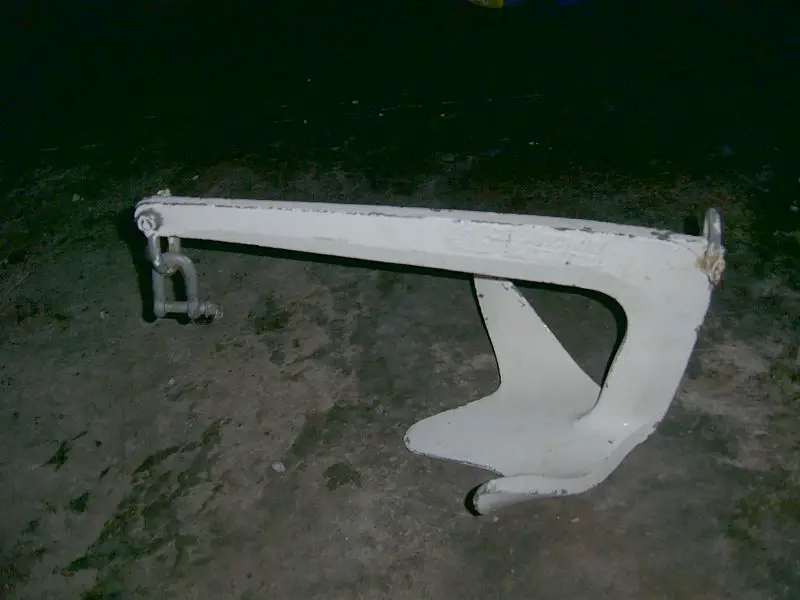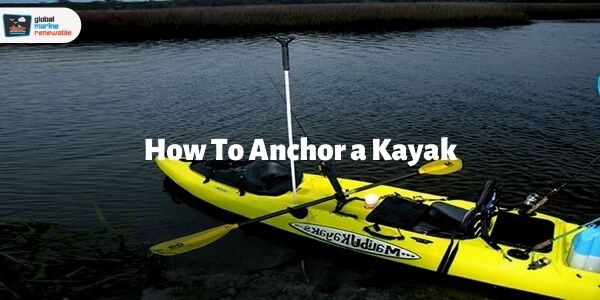Most paddlers do not use a commercially available anchor to secure their boats in one place.
Kayak is a small vessel with a limited facility to store equipment/tools. Hence, paddlers prefer to use makeshift anchors such as a piece of stone or a metal pipe.
Table of Contents
How to Attach an Anchor to a Kayak The Basics
Such an arrangement may work well occasionally, but not in the long run. Fortunately, there are a variety of kayak anchors available on the market. This post is intended to help you rig an anchor the right way.
Best Anchors for a Kayak and How to Rig Them
It is not uncommon for rookie paddlers to choose the anchor without considering key determinants such as type of water, type of bottom, and the weight of the kayak. Anchoring a kayak in flowing water is a risky business.
If the kayak toppled over in the water, you could end up with severe physical injuries or even lose your life.
The anchors discussed below are intended to be used in specific situations. Read along to know more about them.
1. Folding Anchor – How to Attach an Anchor to a Kayak
A folding anchor has spoon-shaped movable flukes. It combines the best features of several small-sized anchors. The flukes are held together by a lock that can be unlocked by rotating the collar. Below, I have shared pictures of a folding anchor in an open and locked state.
Folding anchors are available in a variety of sizes. A three-pound folding anchor would suffice for a one-person kayak. Paddlers like the fact that this anchor folds up in the shape of a rod.
This is the best anchor for kayaks with no storage facility on board. It fits quite easily in a backpack. A folding anchor works perfectly in a shallow freshwater area. However, it could be challenging to control this anchor in deep waters with a sandy bottom.
How to Rig a Folding on a Kayak: Step-By-Step Instructions
Step 1:
Folding anchors come with a slot at the bottom of the shaft, wide enough for a rope with 1-inch thickness. Insert a half-inch thick string into the slot and secure it with 2-3 overhand knots.
Step 2:
These anchors have another slot on the top of the shaft. Take the same rope and zip-tie it to the top slot. Make sure the line is pulled tight between the bottom and top slots.
Step 3:
For the benefit of fellow kayakers, attach a float, buoy, or a bobber on the rope. If the unexpected is to happen and the anchor gets stuck in the bottom, you can cut the cord and break free. Other kayakers can use the same anchor. Now you can toss the anchor in the water.
2. Pole Anchor
Pole anchors have been in use for centuries. With time they have evolved. The modern pole anchors are made with lightweight materials such as aluminum, graphite, or iridium. The function of a pole anchor is to stop the boat quickly in shallow water.
Rigging other shallow water anchors can take a considerable amount of time and effort. By the time you are ready, the fish would already be spooked. Such is not the case with a pole anchor. The construction of a pole anchor is quite simple. It is a long rod with one end pointy and the other blunt (no slots). You don’t need a rope to rig an anchor pole.
Automatic anchor poles do not come with a rope. They are attached to the stern of a sailboat. You can rig them with a press of a button. However, it is impossible to connect such a mechanism in a small boat such as a kayak. I would suggest you use the traditional anchor pole.
How to Rig a Pole Anchor on a Kayak: Step-By-Step Instructions
Step 1:
Set up an anchor trolley on the side rim of the cockpit. An anchor trolley is a string mechanism that allows the anchor pole to move freely at several angles.
An anchor trolley comes with a string and a metallic ring. You can install the trolley onto the kayak with nuts and bolts.
Step 2:
To rig an anchor pole in shallow or flat water, all you have to do is insert the rod in the metal ring and stick it in the ground. Depending on the type of bottom, you will have to apply pressure from above.
Step 3:
Next, use one line of the anchor trolly to move the ring horizontally. Based on the direction of the wind and the flow of water, you can change the rigged anchor’s position.
Also Read: How To Get in and Out of a Kayak
3. Bruce Claw Anchor – How to Attach an Anchor to a Kayak

A Bruce anchor is one of the most effective anchors on the market. It was designed in the 70s by Peter Bruce, an Isle of Man citizen. Initially, this anchor was created for large ships and water vessels. Hence the size was bigger. Due to its popularity and effectiveness, a miniaturized version of the Bruce anchor was introduced.
Bruce anchors are perfect for deep water anchoring. They may not set quickly, but they are capable of withstanding harsh weather.
They are recommended for the bottom with rocks, pebbles, and boulders. Setting up a base with a dense plantation can be quite challenging. Hence, you must inspect the seafloor beforehand.
How to Rig a Bruce Claw on a Kayak: Step-By-Step Instructions
Step 1:
A Bruce anchor is equipped with two slots for the rope. The wider aperture is present on the tip of the shaft, whereas the shorter one is located at the bottom.
Step 2:
Like the folding anchor, you must secure the rope on the bottom slot by 2-3 overhand knots.
Step 3:
Next, fixate the same rope on the upper slot with the help of a zip tie. A Bruce anchor weighs considerably less than the folding anchor, but it is not foldable. Hence, most kayakers prefer to have it tied up and ready before heading out in the water.
Step 4:
Attach a float or a bobber on the rope. Before tossing the anchor in the water, inspect the bottom of the water body. Find a rocky bottom, mark the areas with a floater.
Step 5:
Now you can toss the anchor into the water.
How to Attach an Anchor to a Kayak Summary
Anchoring a kayak can be physically demanding at times. In adverse weather conditions, you must be prepared to move the anchor position and location periodically.
Hence make sure that you are physically fit enough for this task. Besides, the methods discussed in this post do not require you to have technoscientific skills.
If you don’t have a kayak yet and looking to buy one, then read these reviews:
- Best fishing kayak under $800
- Best fishing kayak under $300
- Best fishing kayak under $1000
- How to tie down a Kayak
